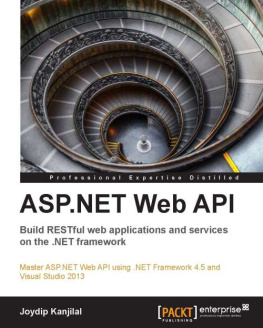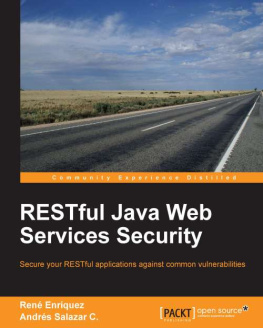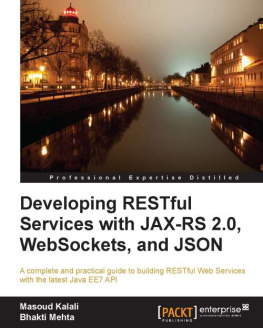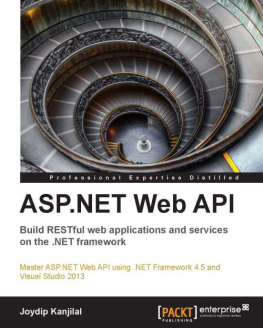Bill Burke - RESTful Java with JAX-RS 2.0
Here you can read online Bill Burke - RESTful Java with JAX-RS 2.0 full text of the book (entire story) in english for free. Download pdf and epub, get meaning, cover and reviews about this ebook. year: 2013, publisher: OReilly Media, genre: Computer. Description of the work, (preface) as well as reviews are available. Best literature library LitArk.com created for fans of good reading and offers a wide selection of genres:
Romance novel
Science fiction
Adventure
Detective
Science
History
Home and family
Prose
Art
Politics
Computer
Non-fiction
Religion
Business
Children
Humor
Choose a favorite category and find really read worthwhile books. Enjoy immersion in the world of imagination, feel the emotions of the characters or learn something new for yourself, make an fascinating discovery.
- Book:RESTful Java with JAX-RS 2.0
- Author:
- Publisher:OReilly Media
- Genre:
- Year:2013
- Rating:4 / 5
- Favourites:Add to favourites
- Your mark:
RESTful Java with JAX-RS 2.0: summary, description and annotation
We offer to read an annotation, description, summary or preface (depends on what the author of the book "RESTful Java with JAX-RS 2.0" wrote himself). If you haven't found the necessary information about the book — write in the comments, we will try to find it.
Learn how to design and develop distributed web services in Java, using RESTful architectural principles and the JAX-RS 2.0 specification in Java EE 7. By focusing on implementation rather than theory, this hands-on reference demonstrates how easy it is to get started with services based on the REST architecture.
With the books technical guide, youll learn how REST and JAX-RS work and when to use them. The RESTEasy workbook that follows provides step-by-step instructions for installing, configuring, and running several working JAX-RS examples, using the JBoss RESTEasy implementation of JAX-RS 2.0.
- Learn JAX-RS 2.0 features, including a client API, server-side asynchronous HTTP, and filters and interceptors
- Examine the design of a distributed RESTful interface for an e-commerce order entry system
- Use the JAX-RS Response object to return complex responses to your client (ResponseBuilder)
- Increase the performance of your services by leveraging HTTP caching protocols
- Deploy and integrate web services within Java EE7, servlet containers, EJB, Spring, and JPA
- Learn popular mechanisms to perform authentication on the Web, including client-side SSL and OAuth 2.0
Bill Burke: author's other books
Who wrote RESTful Java with JAX-RS 2.0? Find out the surname, the name of the author of the book and a list of all author's works by series.





![Mario-Leander Reimer [Mario-Leander Reimer] - Building RESTful Web Services with Java EE 8](/uploads/posts/book/119360/thumbs/mario-leander-reimer-mario-leander-reimer.jpg)



